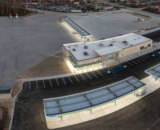Everyone loves a retail rebate program. Certainly all retail rebate programs are good, right? Certainly they generate more profit for my organization. Or, are they much like fuel programs that you sign up for that are supposed to generate more fuel gallons for your location via a reduced cost to the customer when in the end all they do is generate less profit on customer gallons you already have? Hence, you discount gallons that you are already servicing and the few new gallons generated do not offset the loss profit of the old gallons.
But let’s get back to retail rebates. What should you consider when developing a rebate program?
Your Goals: Like most everything in retail, you first must identify what you want to accomplish with the rebate program. Your options include:
- Bridge buy during a particular time period (when you purchase enough of a supplier's product during periods when discounts are being offered to see you through until the next discounting period)
- Grow sales through indirect rebates to consumers
- Mask retail prices through rebates
- Drive profits by supplementing margins via large quantities
- And so forth and so on….
Your Strategy: Next, what is the strategy and what are the tactics you are going to use to execute your rebate program?
The Execution: Still, when it comes to these rebates, you have a lot to consider. For example:
- Who is going to track the rebates?
- You?
- The vendor?
- How are you going to verify that whomever is tracking the rebates that they are accurate?
- If you are unable to answer the first two questions, you may want to consider rebates given as:
- Time of invoice, which is otherwise known as off invoice
- Dead net pricing on invoice
- When are you going to get your rebate?
- Monthly
- Semi-annually
- Annually
Rebate Type: Moreover, what type of rebate are you looking for? Are you aware that there are many different types and they produce very different results for your organization?
- Incentive rebates usually are:
- Volume rebates
- Growth rebates
- Mix rebates
- Retention rebates
- Channel management rebates usually are:
- Indirect consumer rebates
- Price masking rebates
- Ship and debit rebates
In most rebate programs, unless they are off invoice or dead net, you get no savings at the time of purchase. Remember that.
You should never expect vendors to pay rebates on promised purchases. That is not good business on their part and you should not be upset if they refuse. Promises are often not kept in the world of purchasing even when agreed to. Actual purchases are what vendors should pay on unless the signed document is Superman proof.
So do you do rebates or not? Well that depends on you. Just make sure you understand what type of rebate you are being offered and why you are doing it in the first place.
As an example, in the case of promotional volume rebates that require a reduction in retail always do a break even analysis if you are looking to just drive sales and or profits AND not value proposition.
So what do I mean? Here is a hypothetical example:
The Situation:
- Current retail of 20-oz soda is $1.89.
- Current cost of 20-oz soda is $1.07
- Gross Margin Dollar production is .82 cents
- Gross Margin Percent is 43.3 percent
The Rebate: Vendor offers you a case rebate program for a promotional period:
- Case rebate is $7.50 off a case 24/20oz Soda
- This equals .31 cents off a bottle when the rebate is applied to each individual 20-oz bottle
- In order to get rebate you are required to promote soda at .99 cents
- Your normal cost is $1.07
- Your new cost is .76 after the rebate is applied [$1.07 minus .31 cents]
The Results:
- Your new retail for this period is .99 cents
- Your new cost for this period is .76 cents
- Gross Margin Dollar production is .23 cents
- Gross Margin Percent is 23 percent
Thus, what questions should you ask yourself before you accept the rebate in the example? My favorites are:
- What do I want to accomplish?
- What is my plan?
- Will the rebate program for this particular situation accomplish my plan?
- If it is to drive sales in this category, how many more 20-oz bottles at the new retail do I need to sell to be better off than before the rebate offer?
- If it is to drive profit in this category, how many more 20-oz bottles at the reduced profit dollar to I need to sell to be better off than before the rebate offer?
Subscribe to Updates
NATSO provides a breadth of information created to strengthen travel plazas’ ability to meet the needs of the travelling public in an age of disruption. This includes knowledge filled blog posts, articles and publications. If you would like to receive a digest of blog post and articles directly in your inbox, please provide your name, email and the frequency of the updates you want to receive the email digest.


